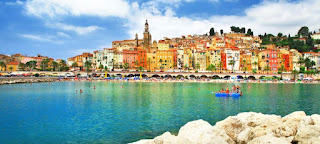“The king was not insane; he was just an eccentric personality living in a world of dreams." -- Empress Elisabeth of Austria, known as Sissi, a friend of King Ludwig II
============================================(in southwest Bavaria, Germany) The village of Ettal is found in the Oberland area in the Graswangtal between the Loisachtal and Ammertal, about 10 km (~ 6 mi.) north of Garmisch-Partenkirchen, and just four kilometers southwest of Oberammergau. Near the village of Ettal is Linderhof Palace, the smallest of three palaces built by King Ludwig II and the only castle that he actually lived to see completed. Nicknamed "little Versailles," the architecture of Linderhof Palace is said to have been heavily influenced by the French castles of the 19th century. Linderhof Palace, the "Royal Villa" of Ludwig II, originated as a hunting lodge belonging to his father Maximilian II -- the "Königshäuschen". It was enlarged by Georg Dollmann between 1870 and 1872 with a U-shaped complex centered on the King's Bedchamber. Like its predecessor, the new building was a wooden post-and-infill construction. It was not until 1874 that the exterior façade was clad in stone, and the old hunting lodge was taken down and rebuilt in what became a park. The palace was then completed with the Hall of Mirrors and Staircase and furnished in the style of the "second Rococo" period. Upon embarking on a tour of the palace you can enjoy the Rococo interiors, which feature numerous pieces of opulent furniture, furnishings, and embellishments. The Palace Park was completed from 1870 to 1880 from designs by Carl von Effner. Surrounding the palace are imitation baroque gardens and terraces and cascades in the Italian Renaissance style. The adjoining landscape garden continues into the forest of the Ammergau Mountains. Ludwig II introduced architectural features into the park based on the world of the Orient, such as the Moorish Kiosk and the Moroccan House, and on scenes from Wagner's musical dramas such as the Venus Grotto, Hunding's Hut and the Hermitage of Gurnemanz. (The linden tree, from which the palace takes its name, is now more than 300 years old.)

















